.jpg)
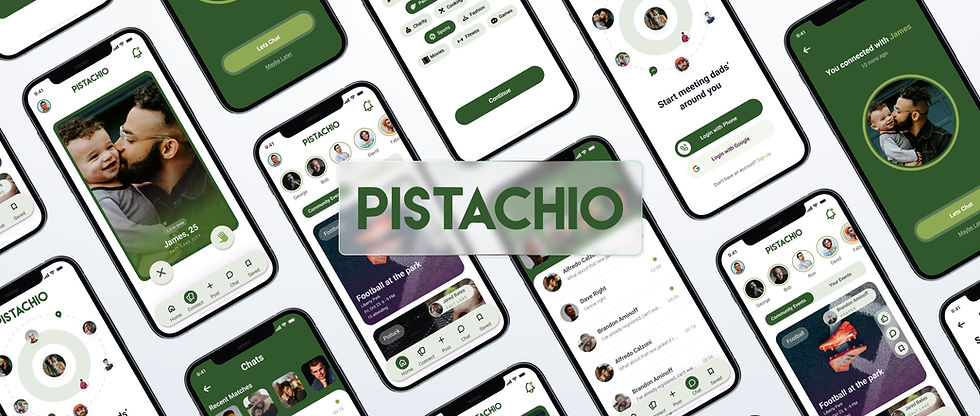.jpg)
Background
Pistachio was specifically designed with dads in mind, recognizing the challenges they face in balancing family, work, and household responsibilities.
Pistachio recognizes the importance of fathers bonding with their kids and connecting with peers. It aims to create strong, real-life communities by providing a platform where dads can connect, plan outings, and build lasting friendships with their children.
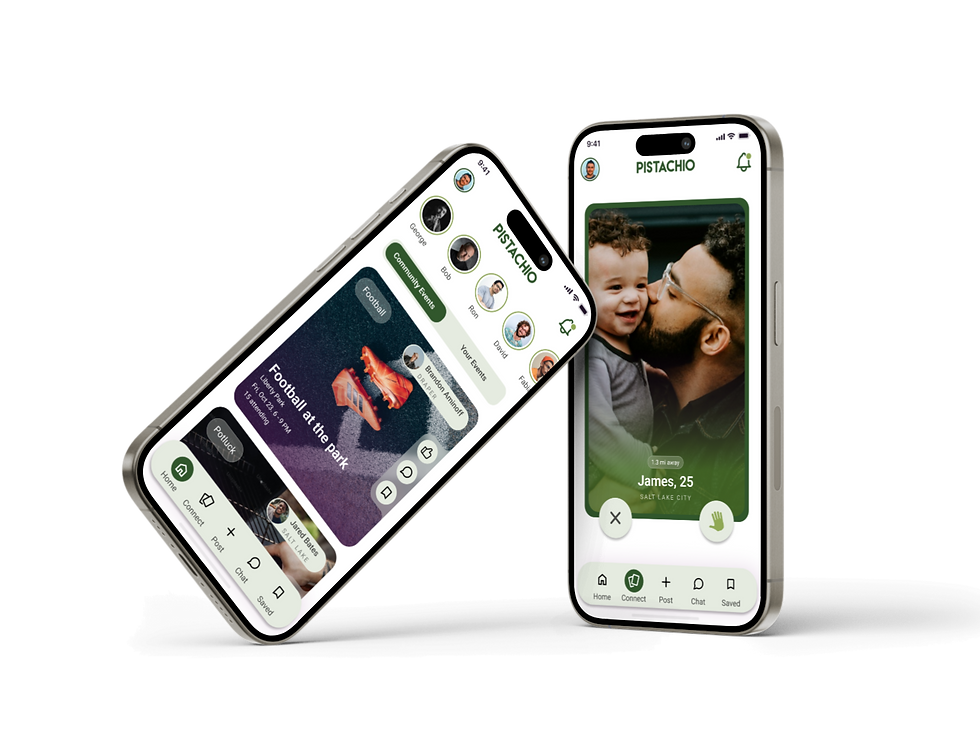
The Problem
How might we provide fathers easy access to build or to join a supportive community that will help them feel more connected and active? How can we connect people to make fatherhood and childhood as fun as possible?
The Solution: Pistachio
Pistachio is a social app that connects fathers locally through a matching system and events board based on shared interests. It helps dads plan or attend local events, fostering strong bonds and building a supportive community.

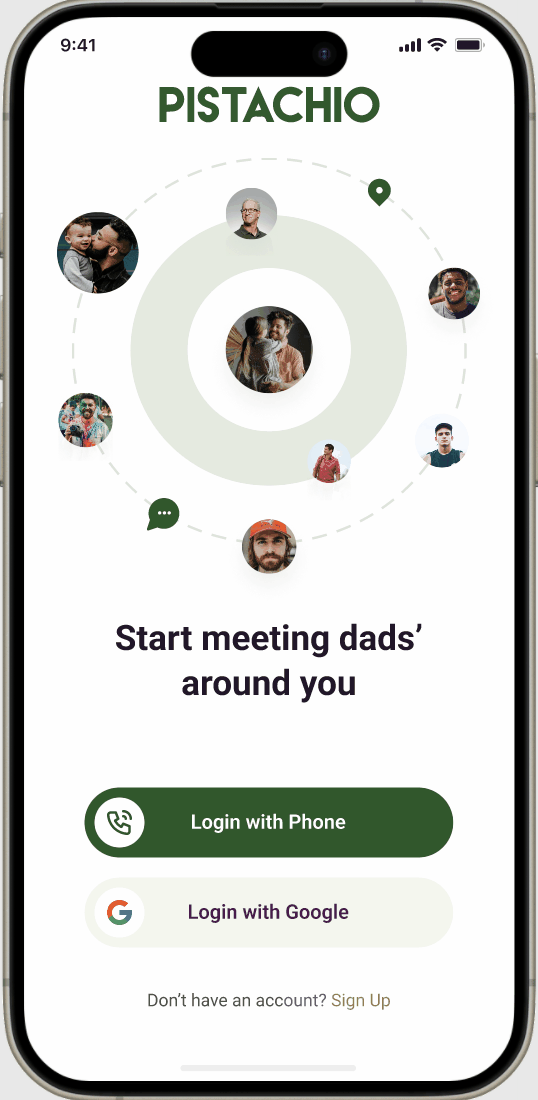
Simplified Onboarding
Pistachio is a father-centric application designed with the idea of simplicity and convenience. Thus, creating an onboarding process that was simple, easy, fast, and secure was one of the main focuses.
Insight:
Based on user feedback, the onboarding process was revised to prioritize security and streamline the user experience. The focus shifted to the father.

Community Focused
Fathers have the ability to browse local community events and choose ones they'd like to attend. Additionally, they can create and view their own events while inviting friends.
Insight:
One of the main features fathers found important was the implementation of support groups. They emphasized community interaction, and as a result wanted something that made it easy to view and share events.
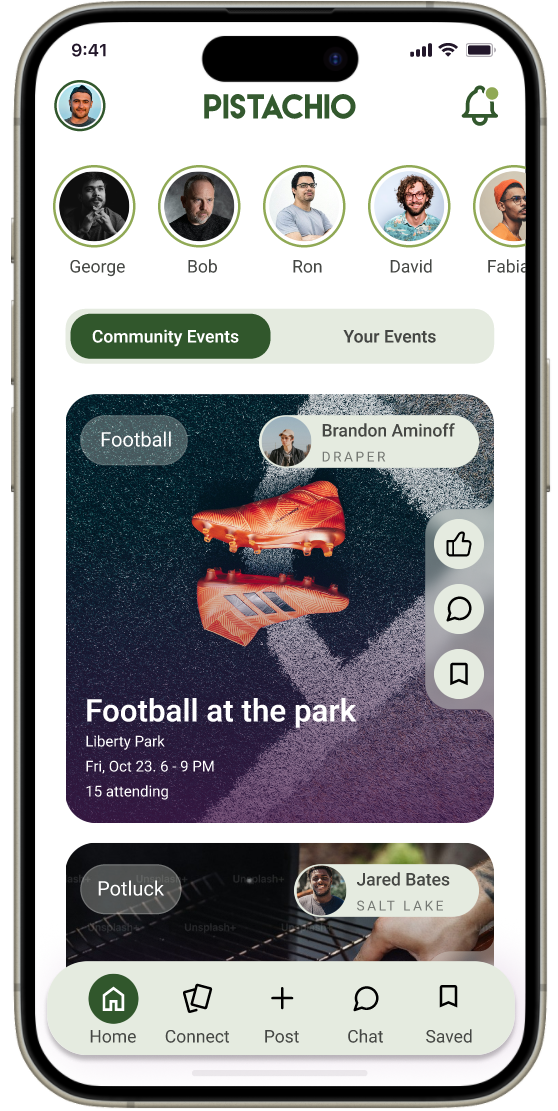

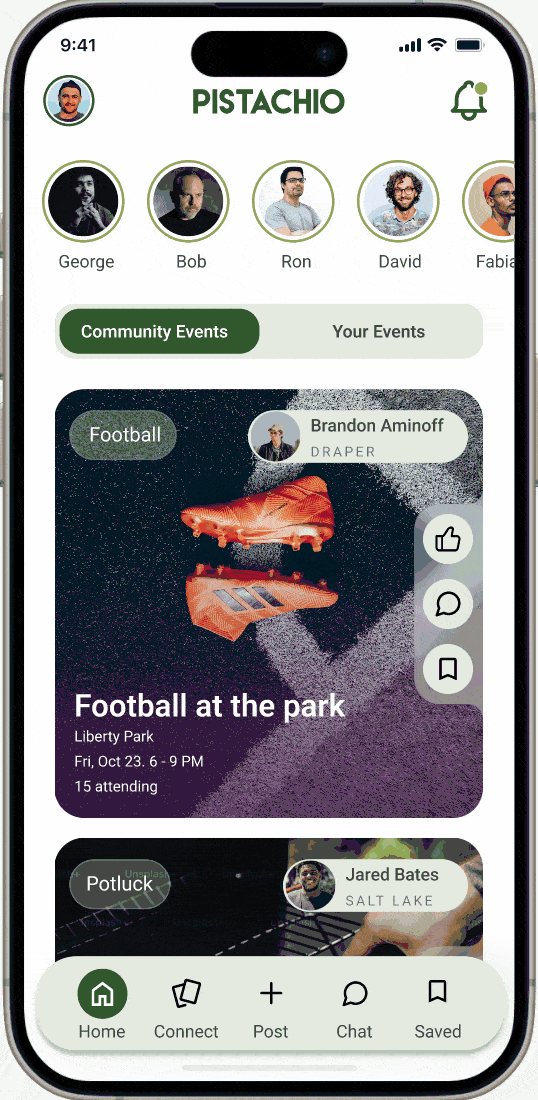
Playful Matching
This feature was an exciting idea to enable dads to discover and connect with other dads. As a team we envisioned a delightful experience where users can browse through profiles, getting a sneak peek at each dad's profile information
Insight:
This interactive and playful approach adds an element of fun and makes the process of finding and building connections within the fatherhood community more intriguing. A main focus was trying to not make it look like a dating app.

Research
Research Goals
During the user research I wanted to understand the needs of parents:
What are some of the challenges parents face in feeling disconnected and lacking of a supportive community.
What are the barriers that prevent parents from actively participating in communities. Such as constraints, lack of awareness, privacy concerns.
Discovering the underlying motivations and aspirations that drive parents.
Exploring how parents prefer to engage with a community platform.
Investigate the specific features and functionalities parents seek in a platform.
Interview Insights
The initial assumption was that new mothers often find themselves feeling lost, isolated, and seeking guidance during challenging times. Society has commonly portrayed mothers as individuals who require substantial support and guidance, particularly during the early stages of motherhood. In the beginning stages of building Pistachio and determining our need, it was the assumption of our team that for a new parent app the mother was going to be the central user. However that quickly changed after user interviews and a look into the competing market.
To assess the demand for this app, it was essential to analyze the parent connectivity market comprehensively. We aimed to determine which segment of parents would benefit most from this type of product—whether it is targeted towards both parents or specifically towards mothers or fathers.
Competitive Analysis
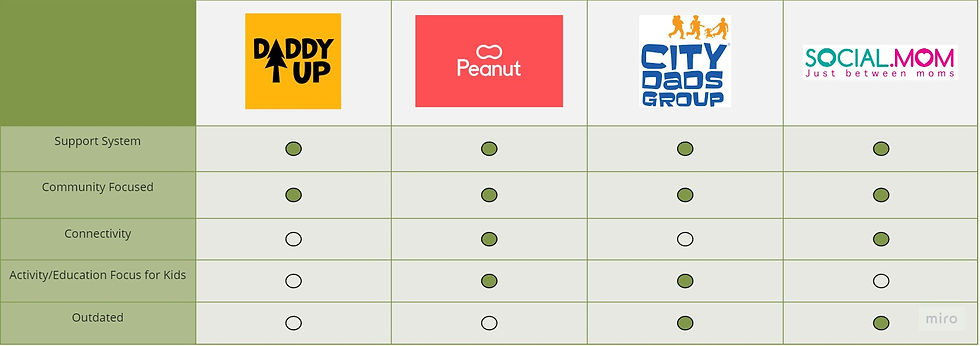%20(1).jpg)
Pivot!
Initially focused on mothers, our research uncovered a strong need among new fathers for community, resources, and support. In response, we shifted our focus to create a platform that empowers and connects fathers throughout their parenting journey.
Define
Affinity Diagram
Some of the underlying themes and trends we discovered from interviewing five parents were needs, tools, age groups, pain points, support systems, and behavior focuses.
Persona Development
By creating a fictional character that represents the user, we can gain a deeper understanding of their unique needs, preferences, and pain points. Our user persona Don was created to represent fathers who seek connectivity from local groups and communities.
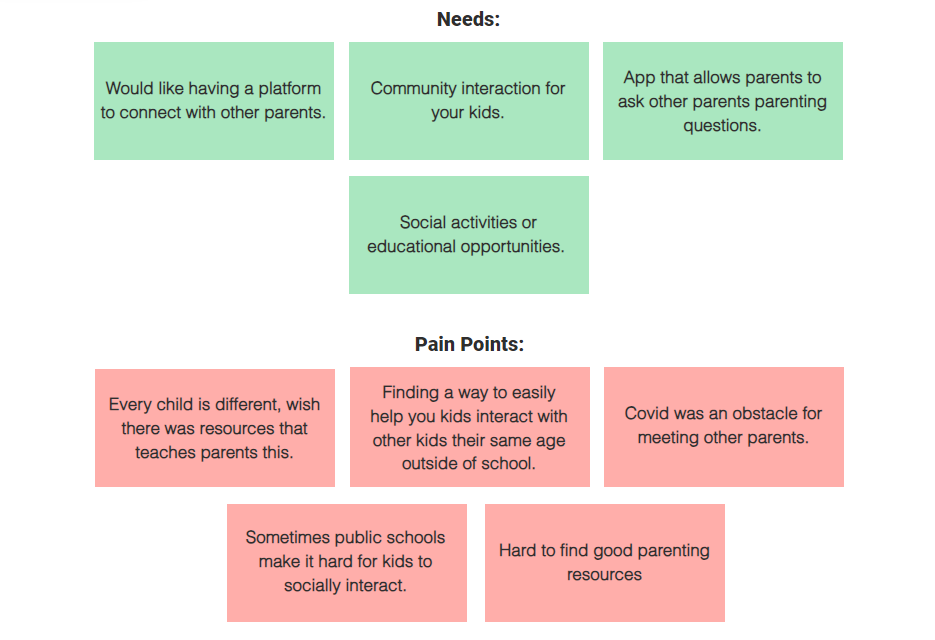
.png)
Ideation
To address the problems that fathers face during fatherhood, my team decided to explored potential solutions that would work in favor of fathers. Through a brainstorming session using the "I Like, I Wish, What If" framework, we identified several key attributes that fathers desire in a application.
Translating Needs Into Features
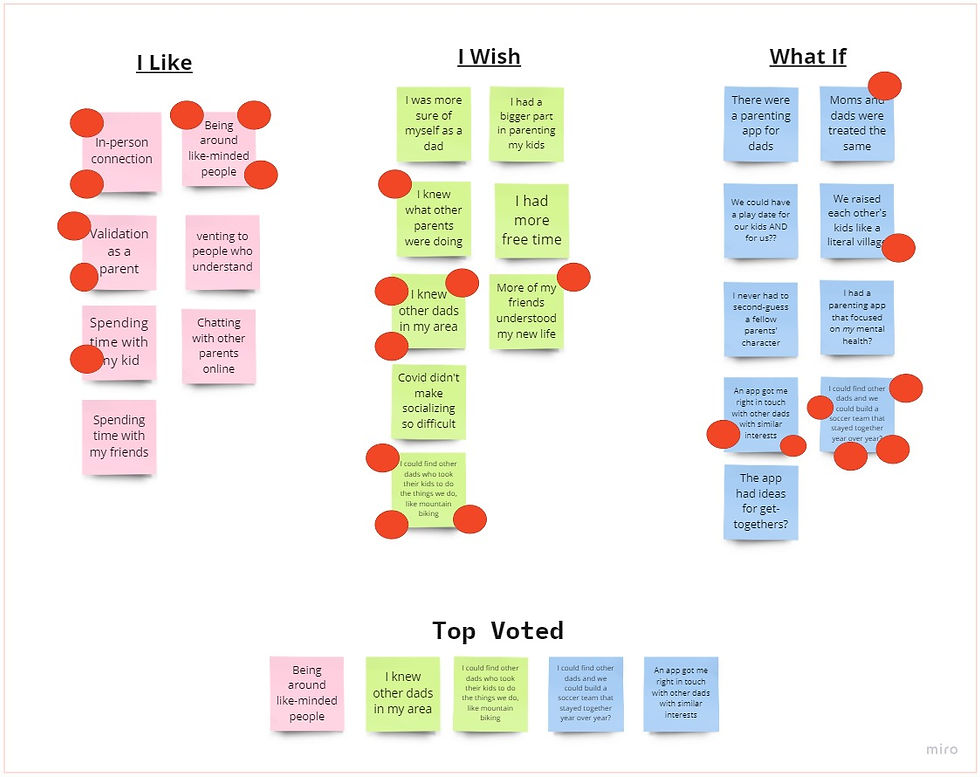.jpg)
Based on brainstorming and user interviews, I determined the most valuable features to focus on. I prioritized simplicity to maintain focus and avoid scope creep.
Prioritization Matrix
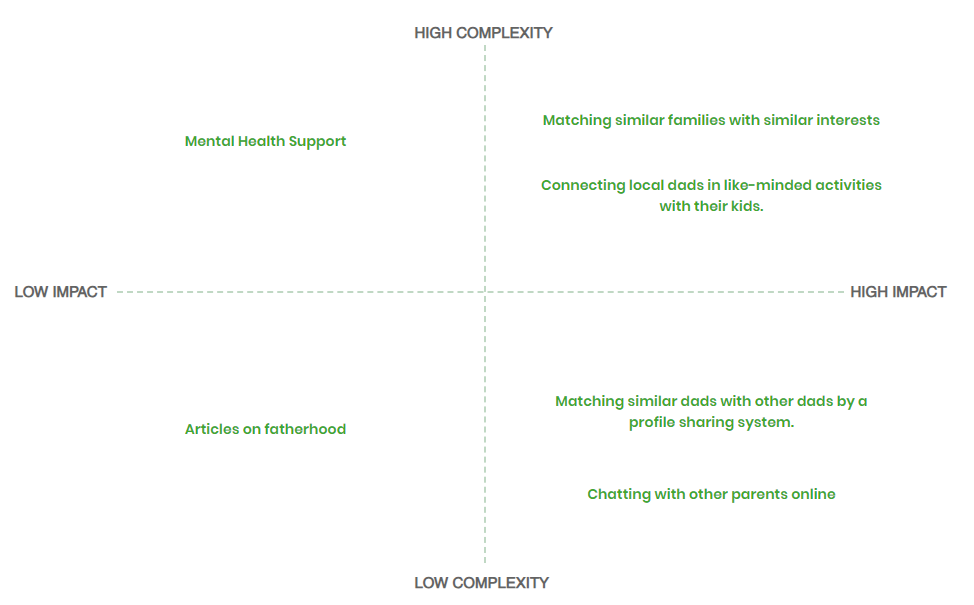
The ideation process provided valuable insights into the motivations of Pistachio users, including their aspirations to strengthen family bonds and their need for support, connection, and a peer community. Armed with this understanding, I embarked on the app design phase, translating these user needs into sketches and visual designs that would effectively cater to their desires and create a fulfilling user experience.
Recap
Design & Testing
Lo-Fi / Mid-Fi Wireframes
Creating lo-fi wireframes allowed me to rapidly sketch out an interface that captured the interests of fathers. These low-fidelity prototypes enabled me to quickly perform user tests and refine the basic layout and functionality of the app, helping me to create a more polished and user-friendly design in the later stages of development.
Onboarding Sketches
Iteration Learnings
During user testing we had users:
-
Users can create a profile.
-
Users can register for an event for themselves and their child
-
Users can add an event.
-
Users match with a local dad to befriend.
![Frame_113[1].png](https://static.wixstatic.com/media/2a9c5e_a0a57e8934924191b43bed53e26c0eff~mv2.png/v1/fill/w_980,h_299,al_c,q_85,usm_0.66_1.00_0.01,enc_avif,quality_auto/Frame_113%5B1%5D.png)
![Section_2[1].png](https://static.wixstatic.com/media/2a9c5e_52ed60639329401aa368e53d69609fc3~mv2.png/v1/fill/w_980,h_609,al_c,q_90,usm_0.66_1.00_0.01,enc_avif,quality_auto/Section_2%5B1%5D.png)
![Section_3[1].png](https://static.wixstatic.com/media/2a9c5e_55a7c224f6be48f38e5a41150bc57155~mv2.png/v1/fill/w_980,h_592,al_c,q_90,usm_0.66_1.00_0.01,enc_avif,quality_auto/Section_3%5B1%5D.png)
Chat and Connecting Sketches
Events/Community Board Sketches
Key Insights:
.jpg)
From this feedback I prioritized which points would be a high priority for Pistachio and for the Users.
These were the points that were addressed and changed for the Hi-Fi Prototype.
-
Page needed for profile details
-
Fix: Decreased the amount of information needed in on-boarding and instead created a profile page dedicated to gathering personal information that the user can input whenever.
-
-
Confused how app got information without entering any information.
-
Fix: Made it easier to understand when and where you can input your personal information and how it is shared based on user preferences.
-
-
Need explanation of what icons in navigation bar do.
-
Fix: Made icons larger and cohesive while adding small descriptions at the bottom for easier usability.
-
-
Confused on how the matching works.
-
Fix: Re-designed the matching page from a carousel feature to a swiping feature. Inspired by how dating apps use swiping features.
-
In designing Pistachio's logo, branding, and user interactions, I aimed for a visually appealing, user-friendly experience that embodies fatherhood, balancing approachability with masculinity. The name Pistachio, inspired by a playful nod to the mother-exclusive app Peanut. I wanted to create a memorable and relatable identity for connecting fathers.
Experimenting with UI Design
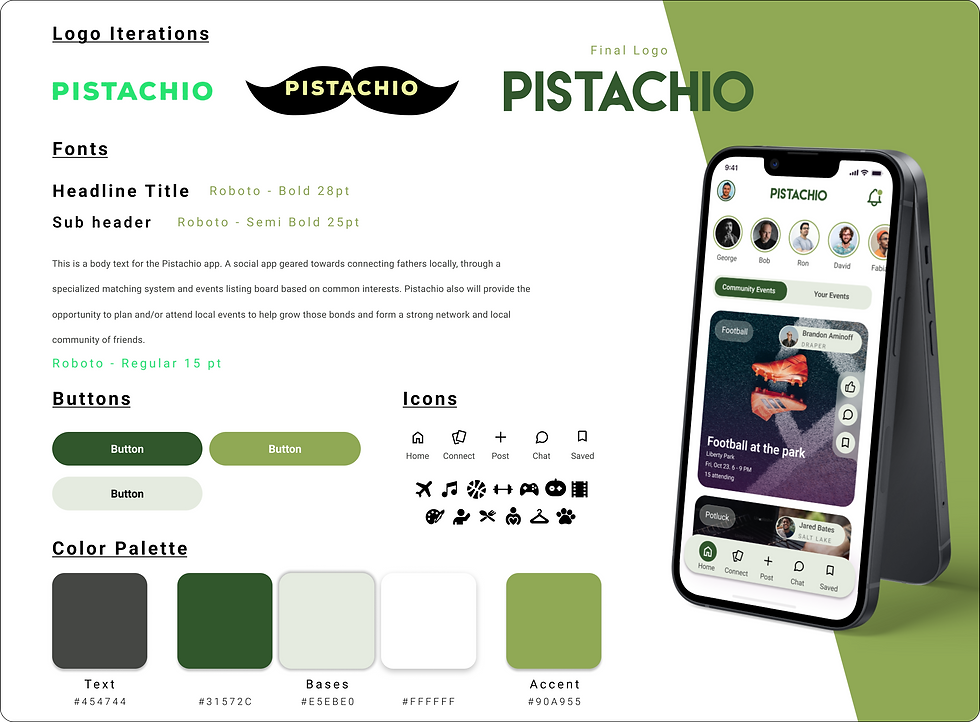
High-Fidelity Designs
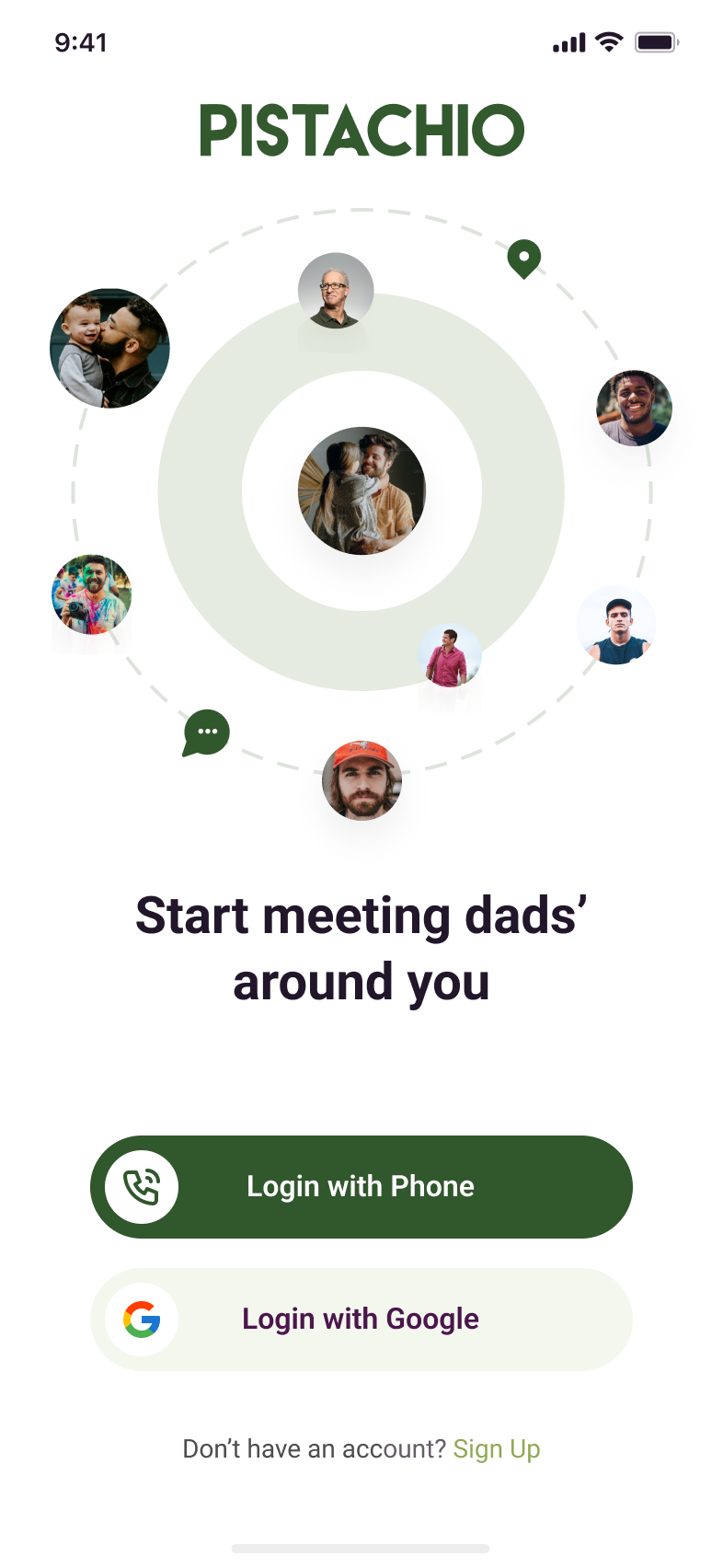
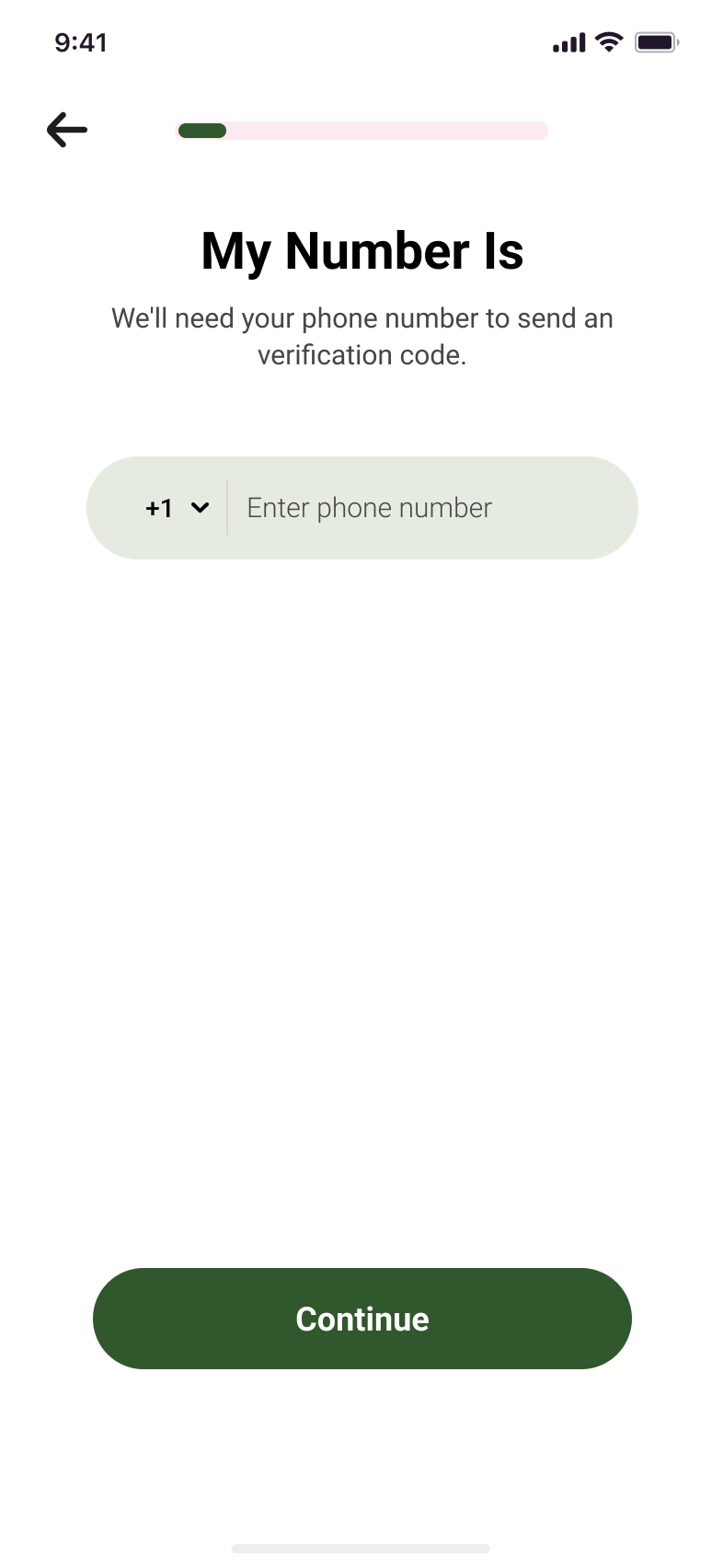
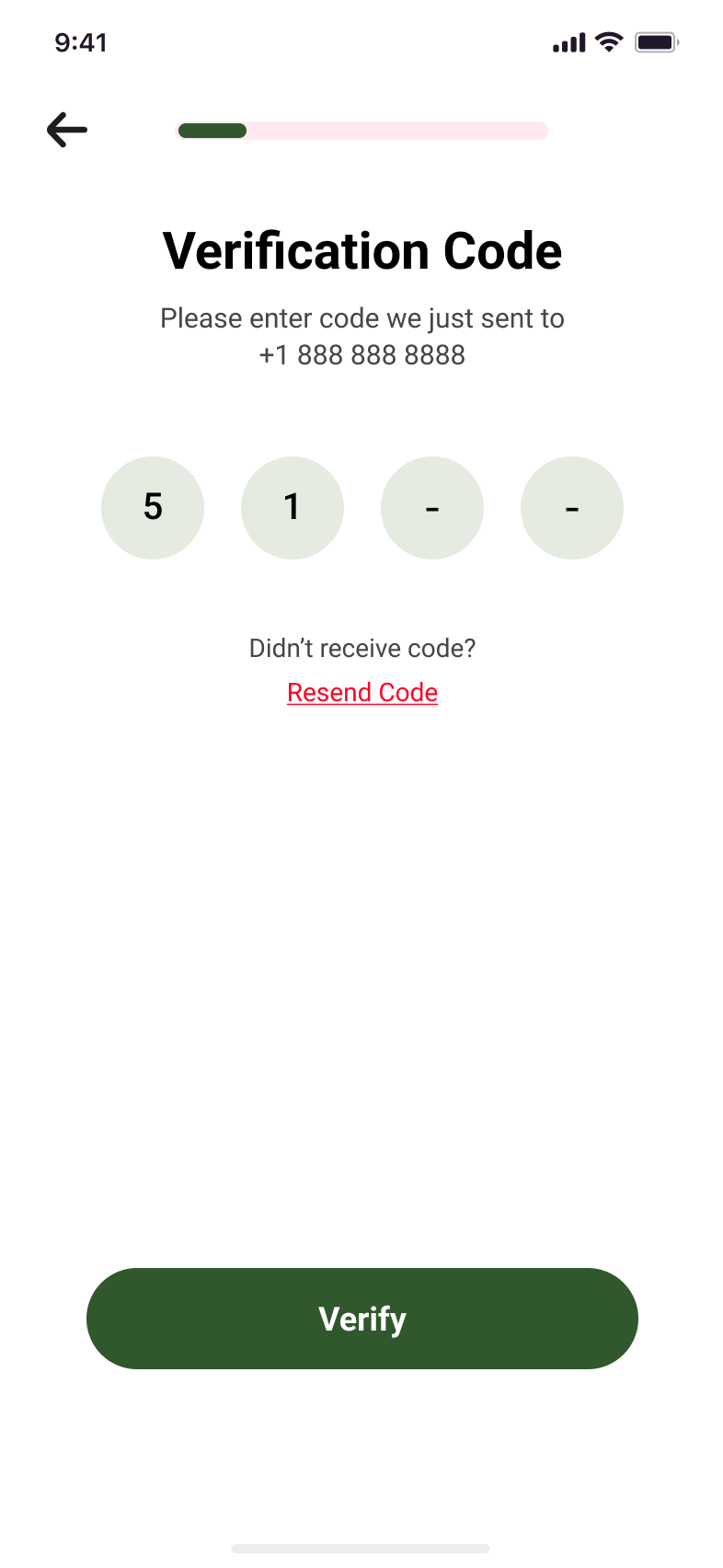
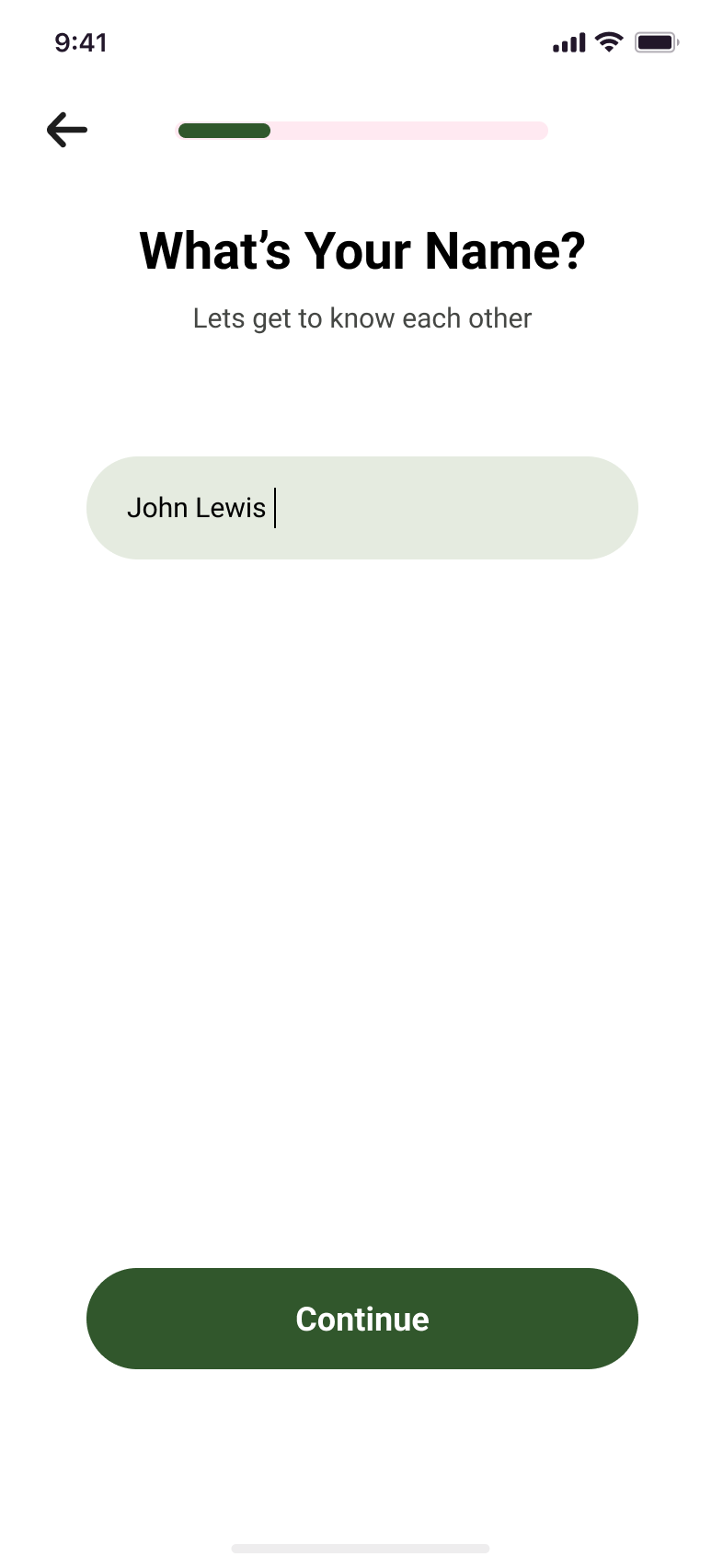
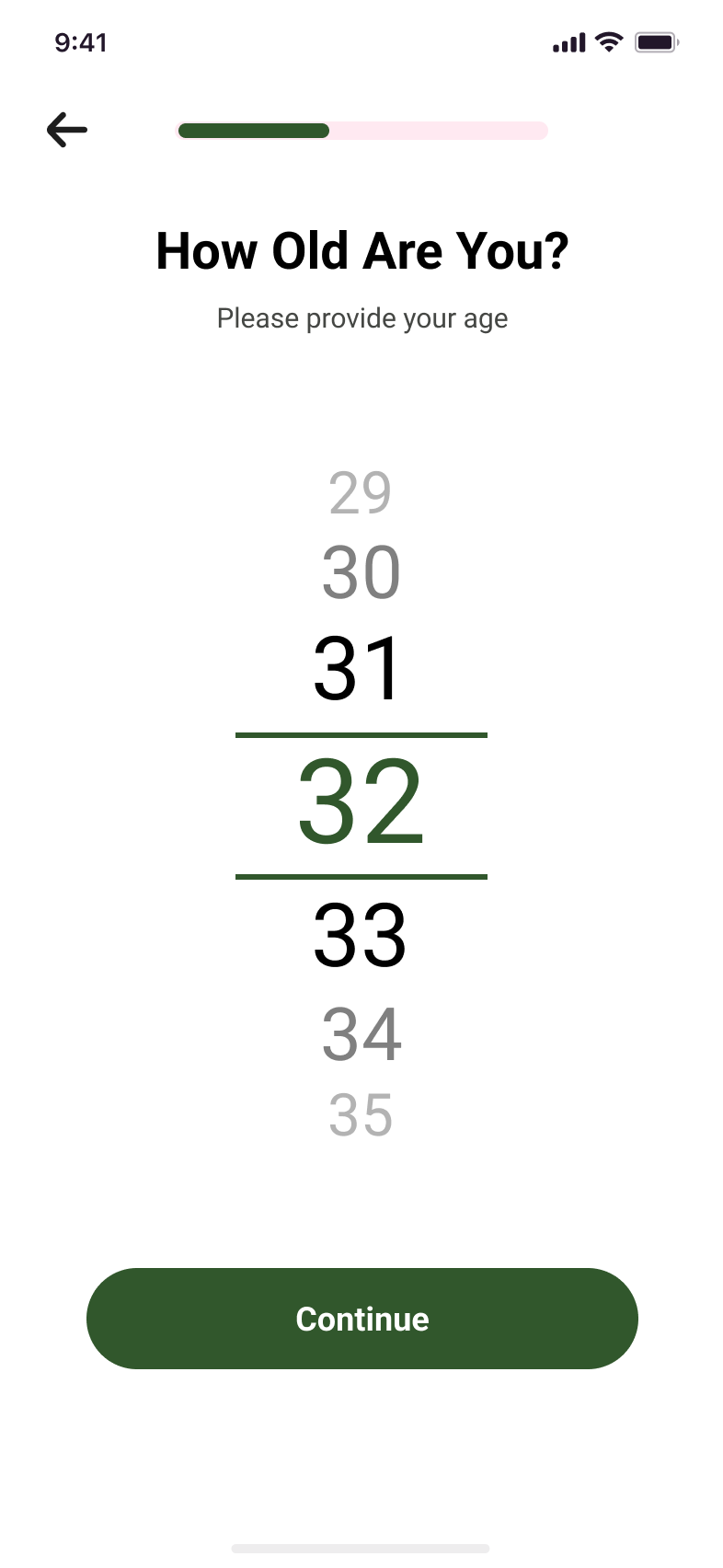
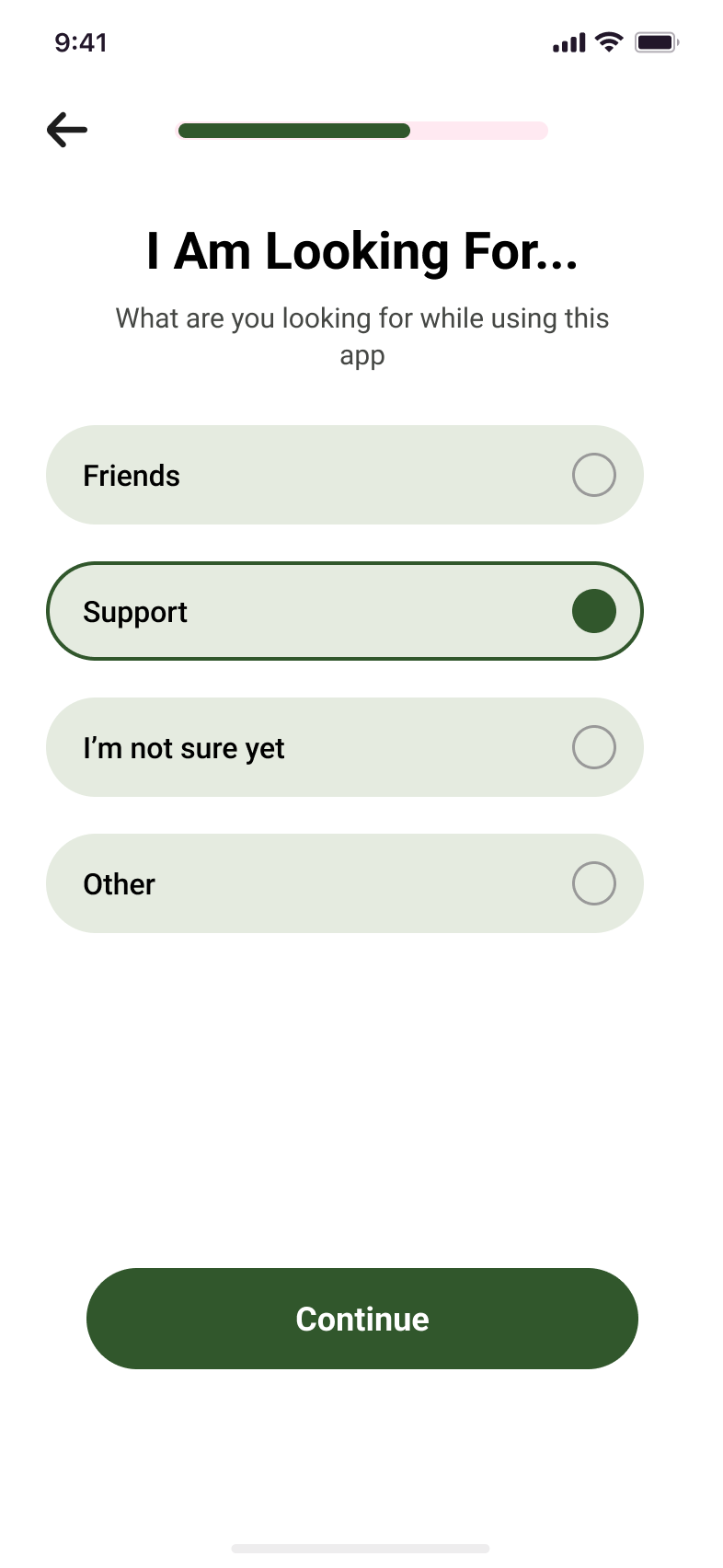
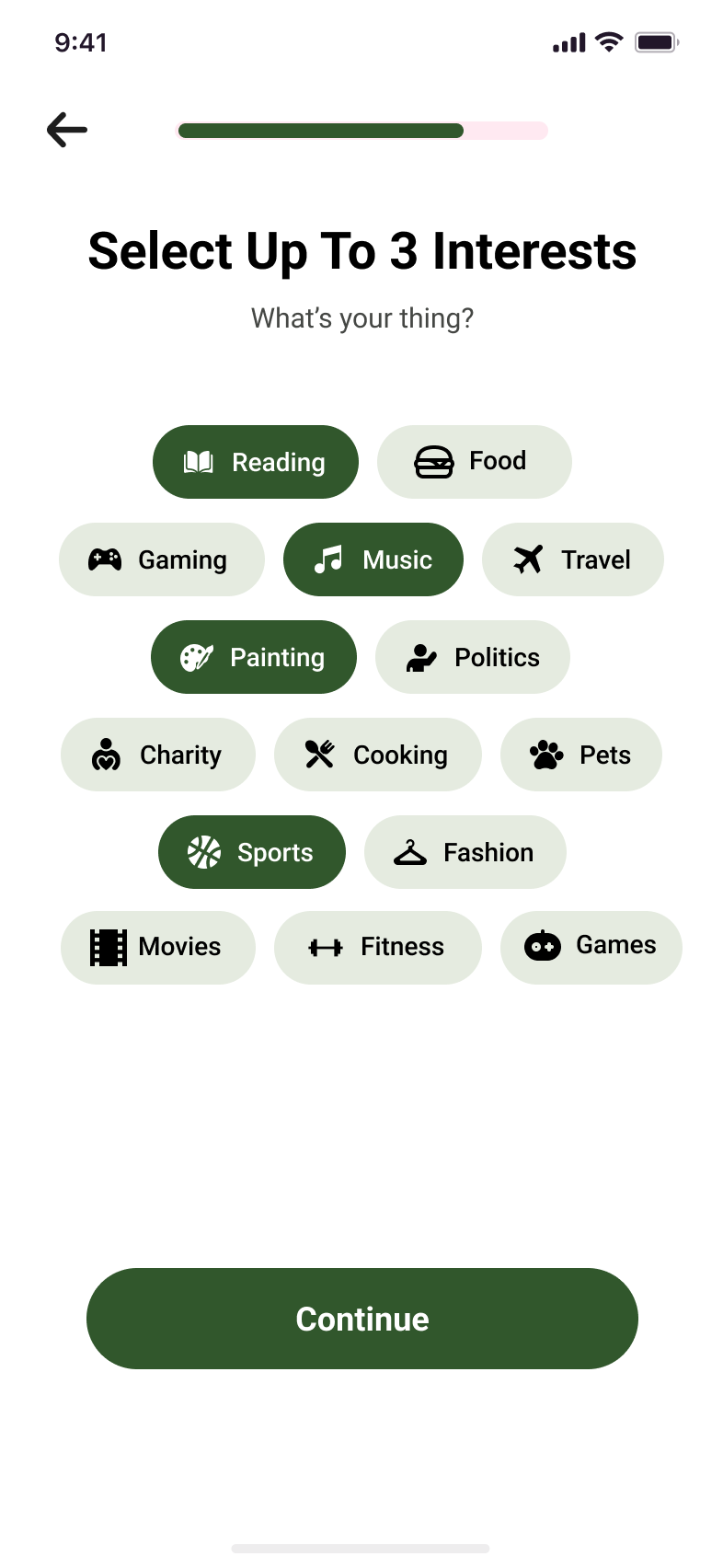
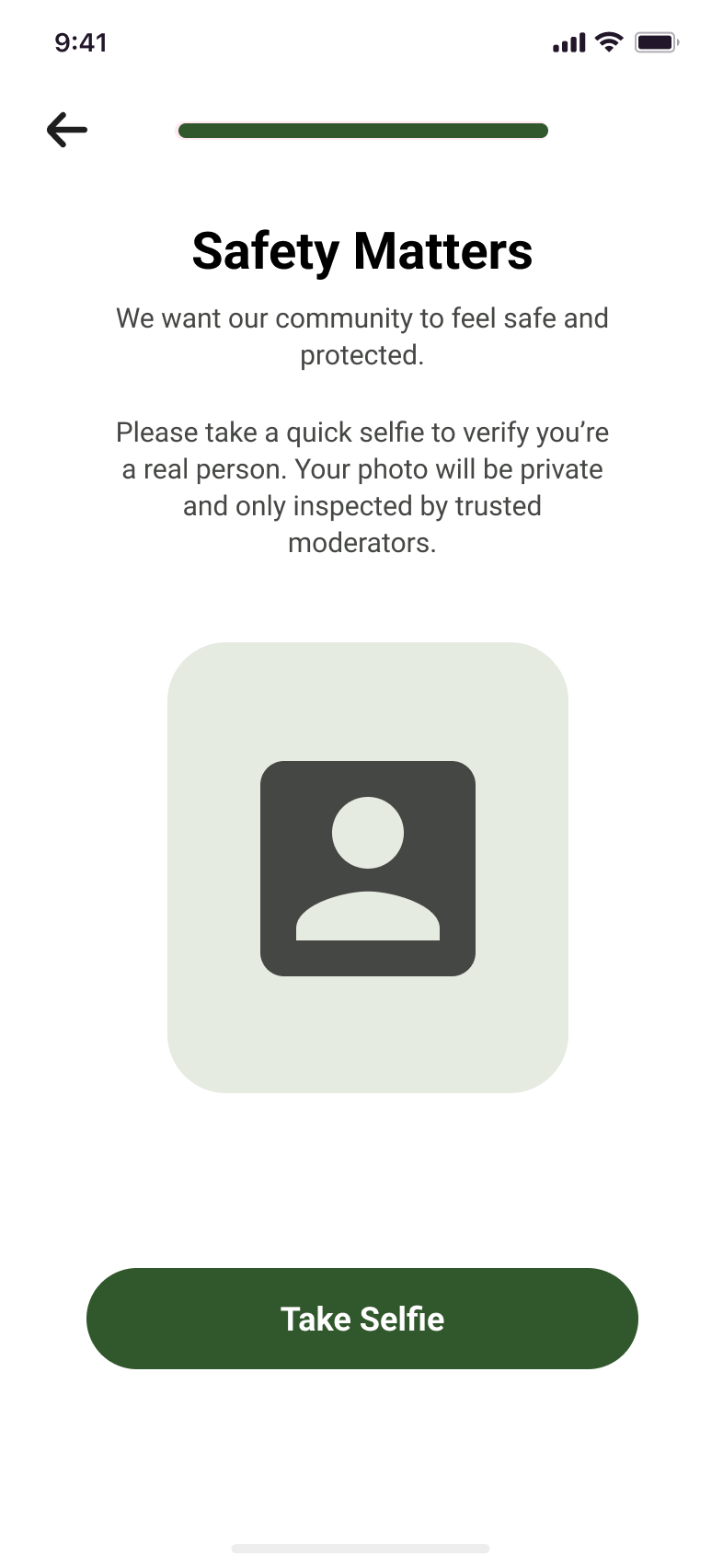
Onboarding:
Home:
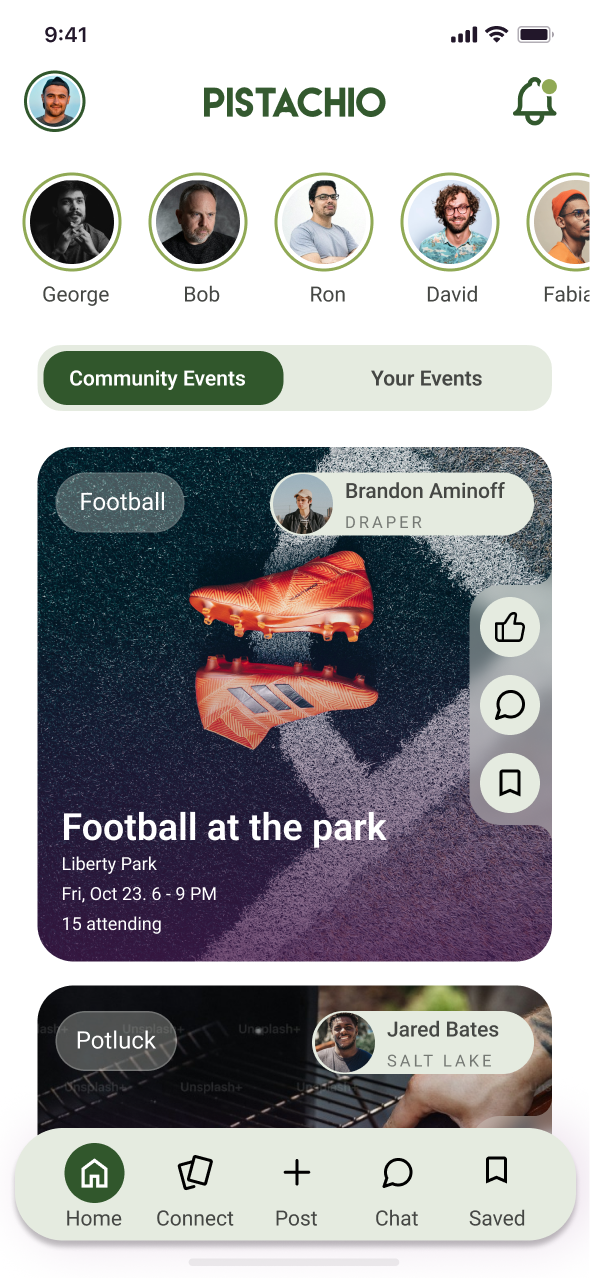
Connect:

Chats:
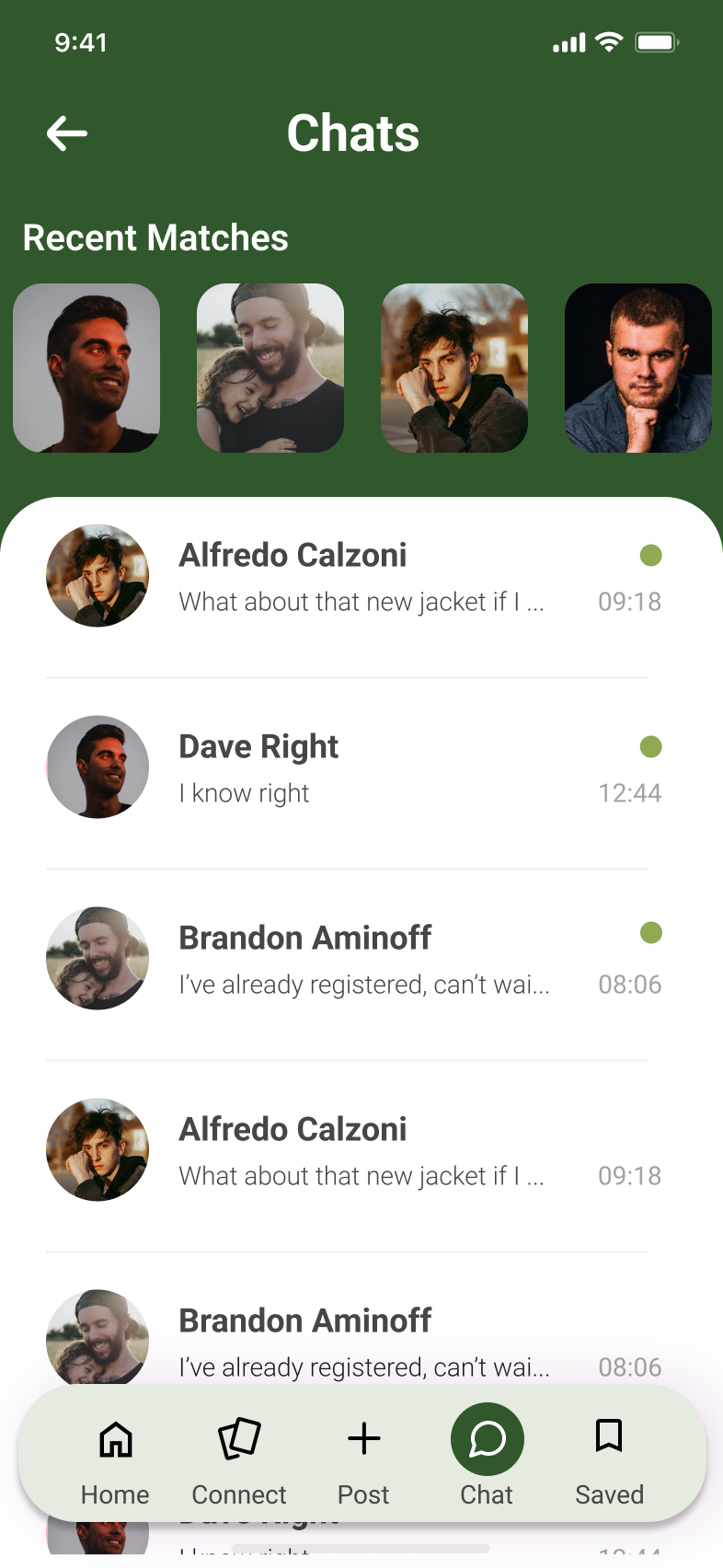
Matches:
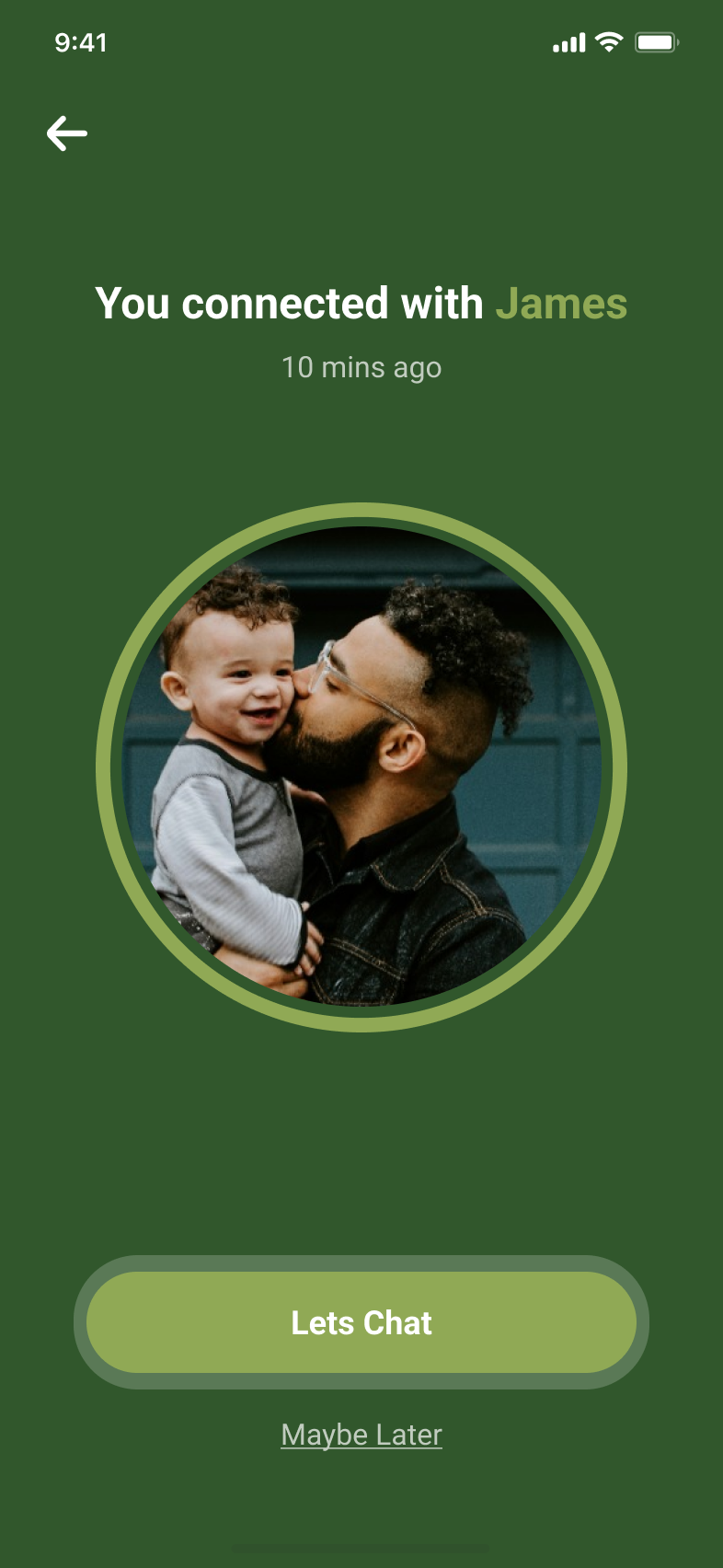










Home:
Connect:


Chats:
Matches:
Reflection
Looking Forward
Education Opportunity:
While our initial focus was on connecting fathers and building a community, we also recognized the value of incorporating educational resources within the Pistachio app. Finding a seamless way to provide parenting information and resources can add value for our users.
User Testing and Inclusivity:
Further testing and user feedback will help us identify and implement UX features that enhance user satisfaction and comfort. We aim to create a welcoming and enjoyable social experience for a diverse range of users, including those who may not fit the traditional mold of fatherhood.
Security and Credibility:
Ensuring user confidence in the app's security and the quality of user profiles is crucial. We will conduct thorough testing and analysis of security features in other social apps to provide the highest level of assurance and credibility to our users.
Conclusion:
By focusing on these areas and continuously refining the app based on user input, we aim to create a valuable platform that supports fathers in building connections, accessing educational resources, and enjoying a secure and enriching parenting experience.
